
John Singer Sargent Painting Reproductions 1 of 12
1856-1925
American Impressionist Painter
Born in Florence in 1856 to American parents who had relinquished the conventions of settled life, John Singer Sargent was destined from the beginning to absorb rather than simply observe European culture. His cosmopolitan upbringing, shaped by a peripatetic family existence across France, Germany, Italy, and Switzerland, exposed him to the Old Masters and to continental artistic traditions at an unusually early age. This itinerant education, orchestrated in large part by his mother, formed the foundation of a dazzling career in which geographical displacement became a constant but also a wellspring of inspiration.
Sargent’s technical proficiency, recognized almost immediately, was not the result of formal schooling alone. Encouraged to draw by his amateur-artist mother, he displayed from childhood a remarkable observational acuity. His sketchbooks, replete with copied illustrations of ships, landscapes, and figures, signaled an already discerning eye. By adolescence he had studied briefly under the German painter Carl Welsch, and later, decisively, under the charismatic Carolus-Duran in Paris. Carolus-Duran's emphasis on direct brushwork, learned from Velázquez, liberated Sargent from the laborious constraints of academic underpainting. He would remain loyal to this method throughout his life.
Although he passed the entrance examination to the École des Beaux-Arts in 1874, it was under Carolus-Duran’s mentorship that Sargent flourished, absorbing the techniques that would distinguish him among his contemporaries. While other Americans trained in Paris remained faithful to neoclassical rigor or adopted Impressionist idioms, Sargent navigated an independent path, displaying at once an academic precision and an exuberant immediacy of touch.
His early travels to Venice, Spain, and North Africa were formative. They enlarged his sense of scale, intensified his preoccupation with light, and offered subjects that nourished his dual impulse toward realism and exoticism. The Spanish trip in particular, and his fascination with Velázquez, was to yield both aesthetic revelation and compositional discipline. It also resulted in the arresting theatricality of "El Jaleo" - a painting as audacious in conception as it was in execution.
Sargent’s portraiture quickly earned him the attention of the Paris Salon, where he debuted with works that were at once elegant, probing, and fluently realized. But it was "Portrait of Madame X" (1884) that marked a pivotal juncture. Intended as a bold assertion of Sargent’s fluency in society portraiture, it instead provoked scandal - not for any impropriety of paint, but for the psychological candour and haughty sensuality of the sitter. The fallout prompted Sargent’s strategic relocation to London.
London proved fertile ground. There, Sargent found patrons, friends, and the necessary insulation to refine his grand manner. While the English press initially resisted what they perceived as a Parisian flashiness, Sargent’s fluency in both composition and character soon won them over. By the 1890s, he was producing portraits at a punishing rate, yet never descending into mere formula. Whether portraying socialites, statesmen, or fellow artists, Sargent captured both surface and spirit. Few painters since Van Dyck had demonstrated such mastery in conjuring not only likeness, but a sitter’s presence within space.
Yet even as his portraits flourished, Sargent grew weary of their constraints. He began to withdraw from commissions, devoting increasing energy to watercolors and mural work. These parallel bodies of work, long considered secondary, have since become central to his reputation. In them, Sargent allowed his painterly instincts fuller rein. The watercolors, luminous and immediate, speak to his love of travel and to an eye constantly alert to architecture, gesture, and pattern. The murals - especially those at the Boston Public Library - reveal an ambition toward synthesis, an attempt to marry narrative and decoration on a monumental scale.
By the early 20th century, Sargent’s reputation was both formidable and, increasingly, out of step with modernism. Younger critics, intoxicated by abstraction, dismissed his work as facile, decorative, or insincere. Roger Fry famously argued that Sargent lacked aesthetic conviction. Yet it is precisely the fusion of surface brilliance and psychological subtlety that constitutes Sargent’s distinctive voice. His portraits, particularly of women, resist caricature; they are elegant, often enigmatic, and always constructed with deliberate intelligence.
Recent decades have brought a reevaluation. The private sketches, male nudes, and informal studies once excluded from critical discussion now offer a more complex vision of the artist. They suggest a painter deeply invested in questions of identity, of gender ambiguity, of the ways in which pose can mask or reveal character. They also confirm that Sargent was not simply an observer of his era’s elite, but a participant in its aesthetic and emotional contradictions.
John Singer Sargent died in London in 1925. His studio, meticulously organized, remained a testament to his lifelong discipline. In death, as in life, Sargent defied categorization. He was a technician of rare command, a chronicler of elegance, and - above all - an artist who understood the pleasures and perils of surface, and who never confused style for substance.
Sargent’s technical proficiency, recognized almost immediately, was not the result of formal schooling alone. Encouraged to draw by his amateur-artist mother, he displayed from childhood a remarkable observational acuity. His sketchbooks, replete with copied illustrations of ships, landscapes, and figures, signaled an already discerning eye. By adolescence he had studied briefly under the German painter Carl Welsch, and later, decisively, under the charismatic Carolus-Duran in Paris. Carolus-Duran's emphasis on direct brushwork, learned from Velázquez, liberated Sargent from the laborious constraints of academic underpainting. He would remain loyal to this method throughout his life.
Although he passed the entrance examination to the École des Beaux-Arts in 1874, it was under Carolus-Duran’s mentorship that Sargent flourished, absorbing the techniques that would distinguish him among his contemporaries. While other Americans trained in Paris remained faithful to neoclassical rigor or adopted Impressionist idioms, Sargent navigated an independent path, displaying at once an academic precision and an exuberant immediacy of touch.
His early travels to Venice, Spain, and North Africa were formative. They enlarged his sense of scale, intensified his preoccupation with light, and offered subjects that nourished his dual impulse toward realism and exoticism. The Spanish trip in particular, and his fascination with Velázquez, was to yield both aesthetic revelation and compositional discipline. It also resulted in the arresting theatricality of "El Jaleo" - a painting as audacious in conception as it was in execution.
Sargent’s portraiture quickly earned him the attention of the Paris Salon, where he debuted with works that were at once elegant, probing, and fluently realized. But it was "Portrait of Madame X" (1884) that marked a pivotal juncture. Intended as a bold assertion of Sargent’s fluency in society portraiture, it instead provoked scandal - not for any impropriety of paint, but for the psychological candour and haughty sensuality of the sitter. The fallout prompted Sargent’s strategic relocation to London.
London proved fertile ground. There, Sargent found patrons, friends, and the necessary insulation to refine his grand manner. While the English press initially resisted what they perceived as a Parisian flashiness, Sargent’s fluency in both composition and character soon won them over. By the 1890s, he was producing portraits at a punishing rate, yet never descending into mere formula. Whether portraying socialites, statesmen, or fellow artists, Sargent captured both surface and spirit. Few painters since Van Dyck had demonstrated such mastery in conjuring not only likeness, but a sitter’s presence within space.
Yet even as his portraits flourished, Sargent grew weary of their constraints. He began to withdraw from commissions, devoting increasing energy to watercolors and mural work. These parallel bodies of work, long considered secondary, have since become central to his reputation. In them, Sargent allowed his painterly instincts fuller rein. The watercolors, luminous and immediate, speak to his love of travel and to an eye constantly alert to architecture, gesture, and pattern. The murals - especially those at the Boston Public Library - reveal an ambition toward synthesis, an attempt to marry narrative and decoration on a monumental scale.
By the early 20th century, Sargent’s reputation was both formidable and, increasingly, out of step with modernism. Younger critics, intoxicated by abstraction, dismissed his work as facile, decorative, or insincere. Roger Fry famously argued that Sargent lacked aesthetic conviction. Yet it is precisely the fusion of surface brilliance and psychological subtlety that constitutes Sargent’s distinctive voice. His portraits, particularly of women, resist caricature; they are elegant, often enigmatic, and always constructed with deliberate intelligence.
Recent decades have brought a reevaluation. The private sketches, male nudes, and informal studies once excluded from critical discussion now offer a more complex vision of the artist. They suggest a painter deeply invested in questions of identity, of gender ambiguity, of the ways in which pose can mask or reveal character. They also confirm that Sargent was not simply an observer of his era’s elite, but a participant in its aesthetic and emotional contradictions.
John Singer Sargent died in London in 1925. His studio, meticulously organized, remained a testament to his lifelong discipline. In death, as in life, Sargent defied categorization. He was a technician of rare command, a chronicler of elegance, and - above all - an artist who understood the pleasures and perils of surface, and who never confused style for substance.
272 Sargent Paintings
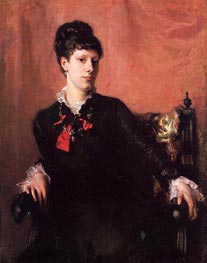
Frances Sherborne Ridley Watts 1877
Oil Painting
$1135
$1135
Canvas Print
$66.65
$66.65
SKU: SAR-1702
John Singer Sargent
Original Size: 105.9 x 81.3 cm
Philadelphia Museum of Art, Pennsylvania, USA
John Singer Sargent
Original Size: 105.9 x 81.3 cm
Philadelphia Museum of Art, Pennsylvania, USA

The Oyster Gatherers of Cancale 1878
Oil Painting
$1449
$1449
Canvas Print
$55.47
$55.47
SKU: SAR-1703
John Singer Sargent
Original Size: 78.7 x 123 cm
Corcoran Gallery of Art, Washington, USA
John Singer Sargent
Original Size: 78.7 x 123 cm
Corcoran Gallery of Art, Washington, USA
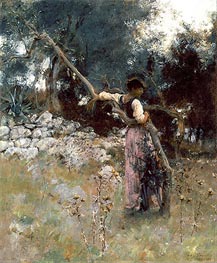
A Capriote 1878
Oil Painting
$1020
$1020
Canvas Print
$69.26
$69.26
SKU: SAR-1704
John Singer Sargent
Original Size: 76.8 x 63.2 cm
Boston Museum of Fine Arts, Massachusetts, USA
John Singer Sargent
Original Size: 76.8 x 63.2 cm
Boston Museum of Fine Arts, Massachusetts, USA
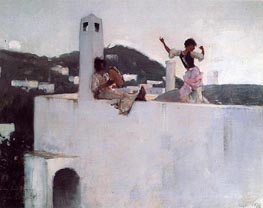
Capri 1878
Oil Painting
$894
$894
SKU: SAR-1705
John Singer Sargent
Original Size: unknown
Private Collection
John Singer Sargent
Original Size: unknown
Private Collection
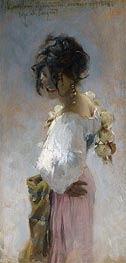
Rosina 1878
Oil Painting
$617
$617
Canvas Print
$55.47
$55.47
SKU: SAR-1706
John Singer Sargent
Original Size: 35.5 x 18 cm
Colby College Museum of Art, Maine, USA
John Singer Sargent
Original Size: 35.5 x 18 cm
Colby College Museum of Art, Maine, USA
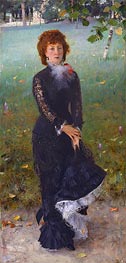
Madame Edouard Pailleron 1879
Oil Painting
$1233
$1233
Canvas Print
$55.47
$55.47
SKU: SAR-1707
John Singer Sargent
Original Size: 211 x 104.5 cm
Corcoran Gallery of Art, Washington, USA
John Singer Sargent
Original Size: 211 x 104.5 cm
Corcoran Gallery of Art, Washington, USA
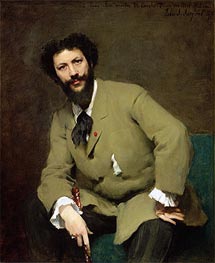
Carolus-Duran 1879
Oil Painting
$1098
$1098
Canvas Print
$69.26
$69.26
SKU: SAR-1708
John Singer Sargent
Original Size: 116.8 x 96 cm
The Clark Art Institute, Massachusetts, USA
John Singer Sargent
Original Size: 116.8 x 96 cm
The Clark Art Institute, Massachusetts, USA
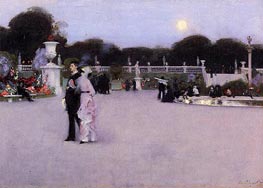
In the Luxembourg Gardens 1879
Oil Painting
$819
$819
Canvas Print
$58.70
$58.70
SKU: SAR-1709
John Singer Sargent
Original Size: 65.7 x 92.4 cm
Philadelphia Museum of Art, Pennsylvania, USA
John Singer Sargent
Original Size: 65.7 x 92.4 cm
Philadelphia Museum of Art, Pennsylvania, USA
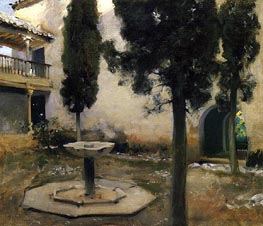
Alhambra, Patio de la Reja 1879
Oil Painting
$533
$533
SKU: SAR-1710
John Singer Sargent
Original Size: unknown
Private Collection
John Singer Sargent
Original Size: unknown
Private Collection
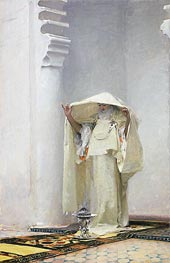
Fumee d'Ambre Gris (Smoke of Ambergris) 1880
Oil Painting
$931
$931
Canvas Print
$55.47
$55.47
SKU: SAR-1711
John Singer Sargent
Original Size: 139 x 90.6 cm
The Clark Art Institute, Massachusetts, USA
John Singer Sargent
Original Size: 139 x 90.6 cm
The Clark Art Institute, Massachusetts, USA
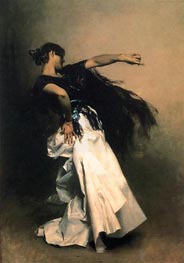
Spanish Dancer c.1880/81
Oil Painting
$980
$980
SKU: SAR-1712
John Singer Sargent
Original Size: unknown
Private Collection
John Singer Sargent
Original Size: unknown
Private Collection
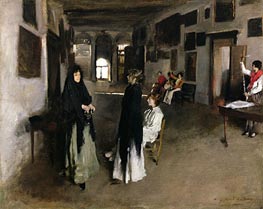
A Venetian Interior c.1880/82
Oil Painting
$940
$940
Canvas Print
$66.65
$66.65
SKU: SAR-1713
John Singer Sargent
Original Size: 49.8 x 60.7 cm
The Clark Art Institute, Massachusetts, USA
John Singer Sargent
Original Size: 49.8 x 60.7 cm
The Clark Art Institute, Massachusetts, USA
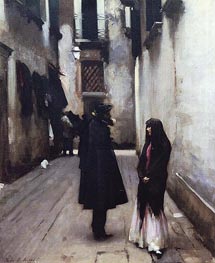
Venetian Street c.1880/82
Oil Painting
$855
$855
SKU: SAR-1714
John Singer Sargent
Original Size: unknown
Private Collection
John Singer Sargent
Original Size: unknown
Private Collection
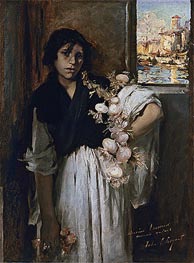
Venetian Onion Seller 1882
Oil Painting
$1084
$1084
Canvas Print
$62.07
$62.07
SKU: SAR-1715
John Singer Sargent
Original Size: 95 x 70 cm
Thyssen-Bornemisza Museum, Madrid, Spain
John Singer Sargent
Original Size: 95 x 70 cm
Thyssen-Bornemisza Museum, Madrid, Spain
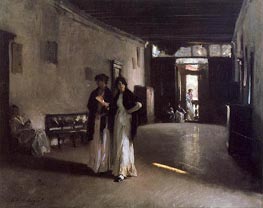
Venetian Interior c.1880/82
Oil Painting
$1032
$1032
Canvas Print
$65.89
$65.89
SKU: SAR-1716
John Singer Sargent
Original Size: 63.3 x 86.8 cm
Carnegie Museum of Art, Pittsburgh, USA
John Singer Sargent
Original Size: 63.3 x 86.8 cm
Carnegie Museum of Art, Pittsburgh, USA
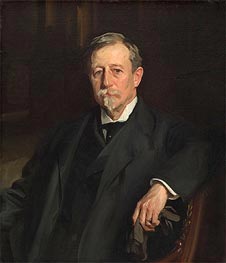
Aaron Augustus Healy 1907
Oil Painting
$1070
$1070
Canvas Print
$72.31
$72.31
SKU: SAR-1717
John Singer Sargent
Original Size: 86.5 x 73 cm
Brooklyn Museum of Art, New York, USA
John Singer Sargent
Original Size: 86.5 x 73 cm
Brooklyn Museum of Art, New York, USA
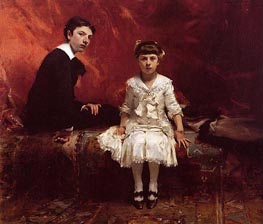
Portrait of Edouard and Marie-Louise Pailleron 1881
Oil Painting
$1233
$1233
Canvas Print
$71.85
$71.85
SKU: SAR-1718
John Singer Sargent
Original Size: 152.4 x 175.2 cm
Des Moines Art Center, Iowa, USA
John Singer Sargent
Original Size: 152.4 x 175.2 cm
Des Moines Art Center, Iowa, USA
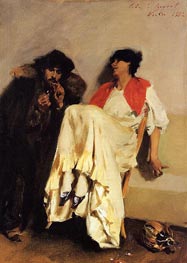
The Sulphur Match 1882
Oil Painting
$814
$814
SKU: SAR-1719
John Singer Sargent
Original Size: 58.2 x 41.5 cm
Private Collection
John Singer Sargent
Original Size: 58.2 x 41.5 cm
Private Collection

Madame X (Madame Pierre Gautreau) 1884
Oil Painting
$1068
$1068
Canvas Print
$55.47
$55.47
SKU: SAR-1720
John Singer Sargent
Original Size: 208.6 x 110 cm
Metropolitan Museum of Art, New York, USA
John Singer Sargent
Original Size: 208.6 x 110 cm
Metropolitan Museum of Art, New York, USA
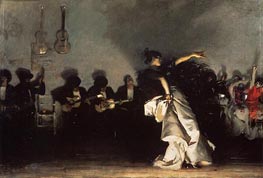
El Jaleo 1882
Oil Painting
$1154
$1154
Canvas Print
$56.11
$56.11
SKU: SAR-1721
John Singer Sargent
Original Size: 232 x 348 cm
Isabella Stewart Gardner Museum, Boston, USA
John Singer Sargent
Original Size: 232 x 348 cm
Isabella Stewart Gardner Museum, Boston, USA
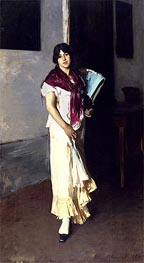
Italian Girl with Fan 1882
Oil Painting
$1041
$1041
Canvas Print
$55.47
$55.47
SKU: SAR-1722
John Singer Sargent
Original Size: 238 x 133.4 cm
Cincinnati Art Museum, Ohio, USA
John Singer Sargent
Original Size: 238 x 133.4 cm
Cincinnati Art Museum, Ohio, USA
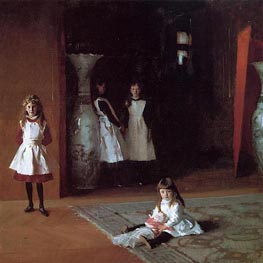
The Daughters of Edward Darley Boit 1882
Oil Painting
$1060
$1060
SKU: SAR-1723
John Singer Sargent
Original Size: unknown
Boston Museum of Fine Arts, Massachusetts, USA
John Singer Sargent
Original Size: unknown
Boston Museum of Fine Arts, Massachusetts, USA
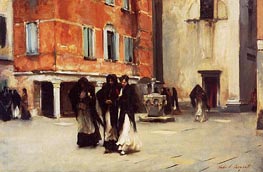
Leaving Church, Campo San Canciano, Venice c.1882
Oil Painting
$1029
$1029
Canvas Print
$55.47
$55.47
SKU: SAR-1724
John Singer Sargent
Original Size: unknown
Private Collection
John Singer Sargent
Original Size: unknown
Private Collection

The Misses Vickers 1884
Oil Painting
$1362
$1362
Canvas Print
$62.83
$62.83
SKU: SAR-1725
John Singer Sargent
Original Size: 137.8 x 183 cm
Galleries and Museums, Sheffield, UK
John Singer Sargent
Original Size: 137.8 x 183 cm
Galleries and Museums, Sheffield, UK